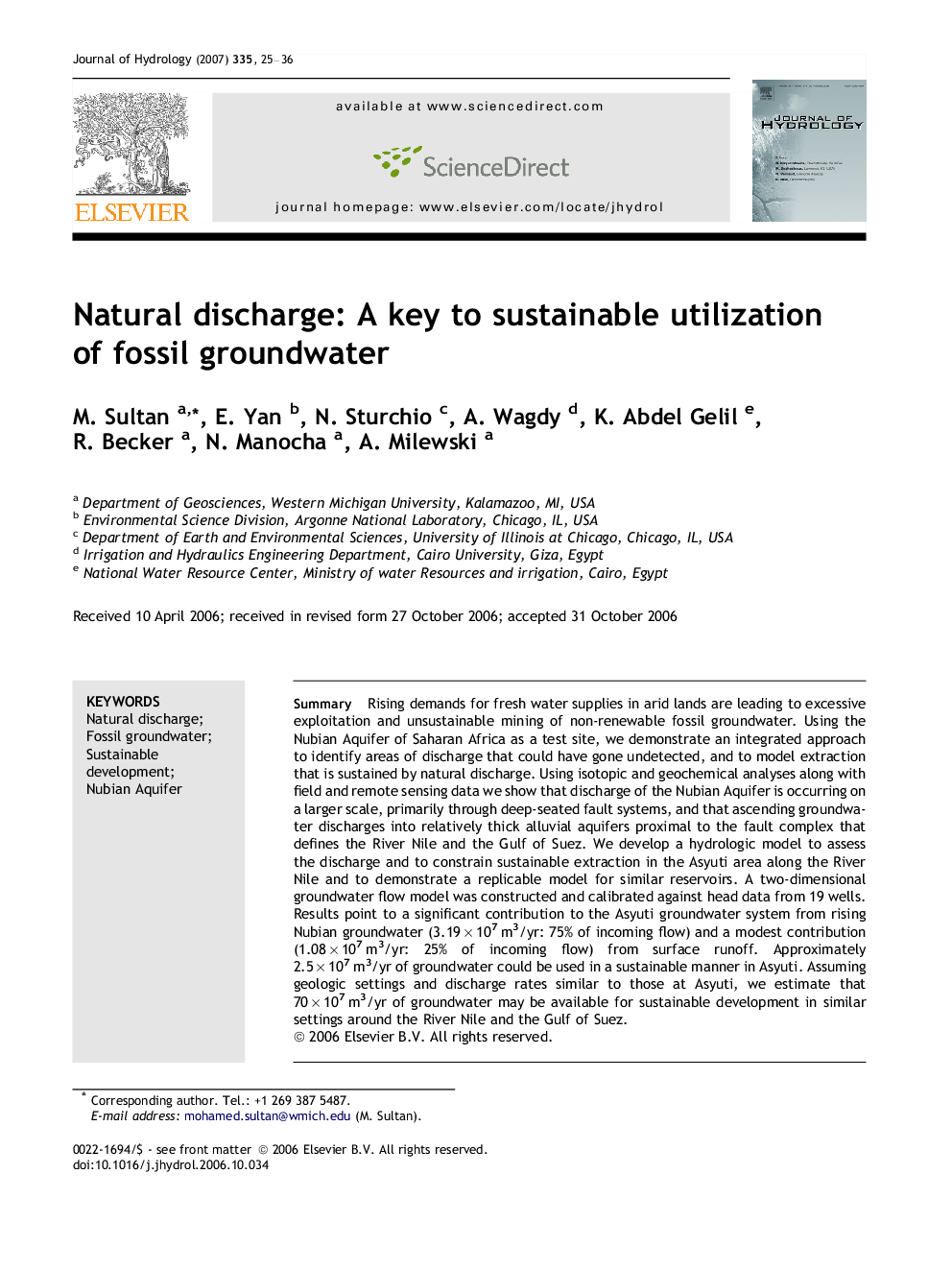| Article ID | Journal | Published Year | Pages | File Type |
|---|---|---|---|---|
| 4579888 | Journal of Hydrology | 2007 | 12 Pages |
SummaryRising demands for fresh water supplies in arid lands are leading to excessive exploitation and unsustainable mining of non-renewable fossil groundwater. Using the Nubian Aquifer of Saharan Africa as a test site, we demonstrate an integrated approach to identify areas of discharge that could have gone undetected, and to model extraction that is sustained by natural discharge. Using isotopic and geochemical analyses along with field and remote sensing data we show that discharge of the Nubian Aquifer is occurring on a larger scale, primarily through deep-seated fault systems, and that ascending groundwater discharges into relatively thick alluvial aquifers proximal to the fault complex that defines the River Nile and the Gulf of Suez. We develop a hydrologic model to assess the discharge and to constrain sustainable extraction in the Asyuti area along the River Nile and to demonstrate a replicable model for similar reservoirs. A two-dimensional groundwater flow model was constructed and calibrated against head data from 19 wells. Results point to a significant contribution to the Asyuti groundwater system from rising Nubian groundwater (3.19 × 107 m3/yr: 75% of incoming flow) and a modest contribution (1.08 × 107 m3/yr: 25% of incoming flow) from surface runoff. Approximately 2.5 × 107 m3/yr of groundwater could be used in a sustainable manner in Asyuti. Assuming geologic settings and discharge rates similar to those at Asyuti, we estimate that 70 × 107 m3/yr of groundwater may be available for sustainable development in similar settings around the River Nile and the Gulf of Suez.
